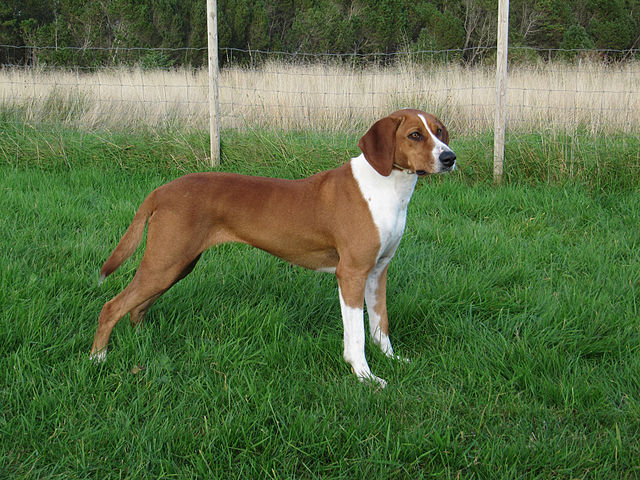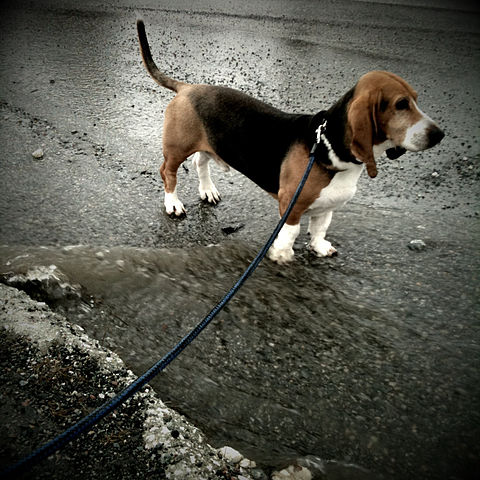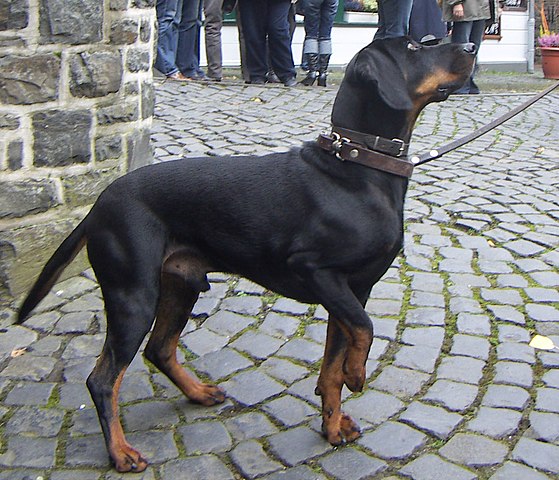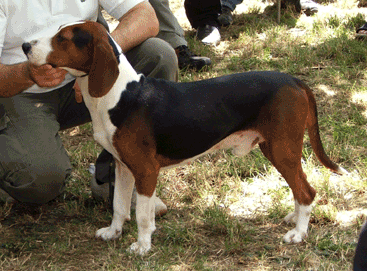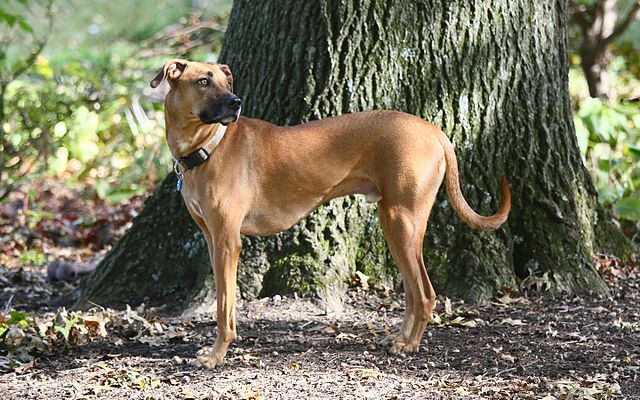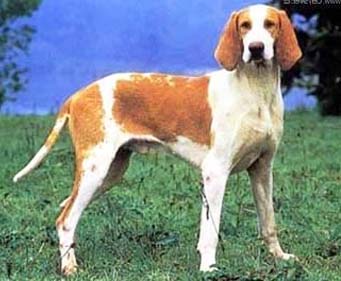The Schiller Hound (AKA the Schillerstovare) was developed by mixing Swiss Hounds with various British hounds (namely the Harrier), in order to create a fox and hare hunter. The breed is Swedish and was recognized by the Swedish Kennel Club in the early 1900’s – even declared as Sweden’s first native breed. They are rare in the United States although are recognized by the UKC. Unlike many scenthounds, this is not a pack hound and instead was used to hunt independently.
Schillers can make fantastic family dogs although they are more often seen as hunter’s dogs because of their reputation of being “the best fox hunting hounds”. They are good with kids but do best with older children as they can be too energetic and rowdy for toddlers. They have a strong, loud voice that is helpful during the hunt (although less so in city living. they do best in rural or country homes). Schillers can make good watch dogs as they will bark when something is amiss, although they are not really “guard dog material”. They are calm and polite in the home and have stable temperaments – being attentive and affectionate, and form strong bonds with those whom they love. They center the majority of their affection on one person in the family, but that doesn’t mean that they can’t still be enamored with other family members as well.
The Schiller Hound is an active breed that requires owners who are just as active and ready to give this life-loving dog all the exercise he needs. He requires daily exercise – and more than just a walk around the block. He needs extensive, varied workouts! Without such he can become destructive, loud and extra bossy. Keep in mind that all exercise should be done on-lead or in a fenced area as he has an above-average propensity for wandering.
Another plus for the Schiller is that he can be easy to train by an experienced dog owner or trainer. Because he may push limits, he is more difficult for novice owners. A good base of obedience is important to establish early on so that he won’t be too pushy with household rules. After a foundation for learning has been laid down, he can then be taught other skills such as nosework. Keep in mind that this scenthound has an independent nature when it comes to learning and traditional methods may need to be modified to keep his attention. This intelligent dog doesn’t need any training when it comes to hunting, as those skills are built-in.
Schiller Hounds are medium to large in size, and are always tan with a black mantle (saddle) on the back. The coat is smooth and close-lying, yet harsh in texture. It requires only a brief brushing once a week in order to stay healthy, and only sheds moderately. The ears are high set, although hang close to the cheeks of the fairly long, triangular face. Legs are long and the overall picture of this hound is of an athletic, elegant dog. The Schiller is actually said to be the fastest Scandinavian hound!
Schillers require plenty of time and attention and won’t function well in homes where owners work all day. They can live well in homes with other dogs and enjoy having playmate, although this will not take the place of regular human companionship. Like most scenthounds they aren’t the best companions for small pets which can be mistaken for prey. They are very playful and enjoy having fun and playing games with their owners. When it comes to health, the Schiller is generally known to be a very healthy breed on the whole. Average life expectancy is 13-15 years. The issues that occasionally crop up include hip and elbow dysplasia. A reputable breeder should hopefully be screening for these conditions, so make sure to ask!
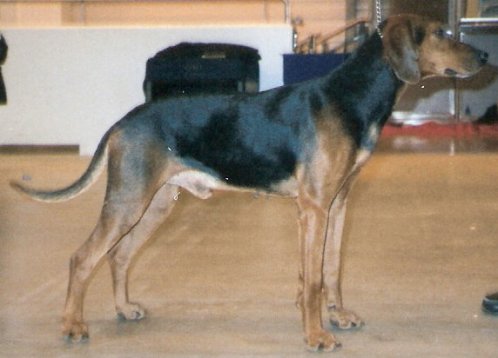
Photo By Canarian


